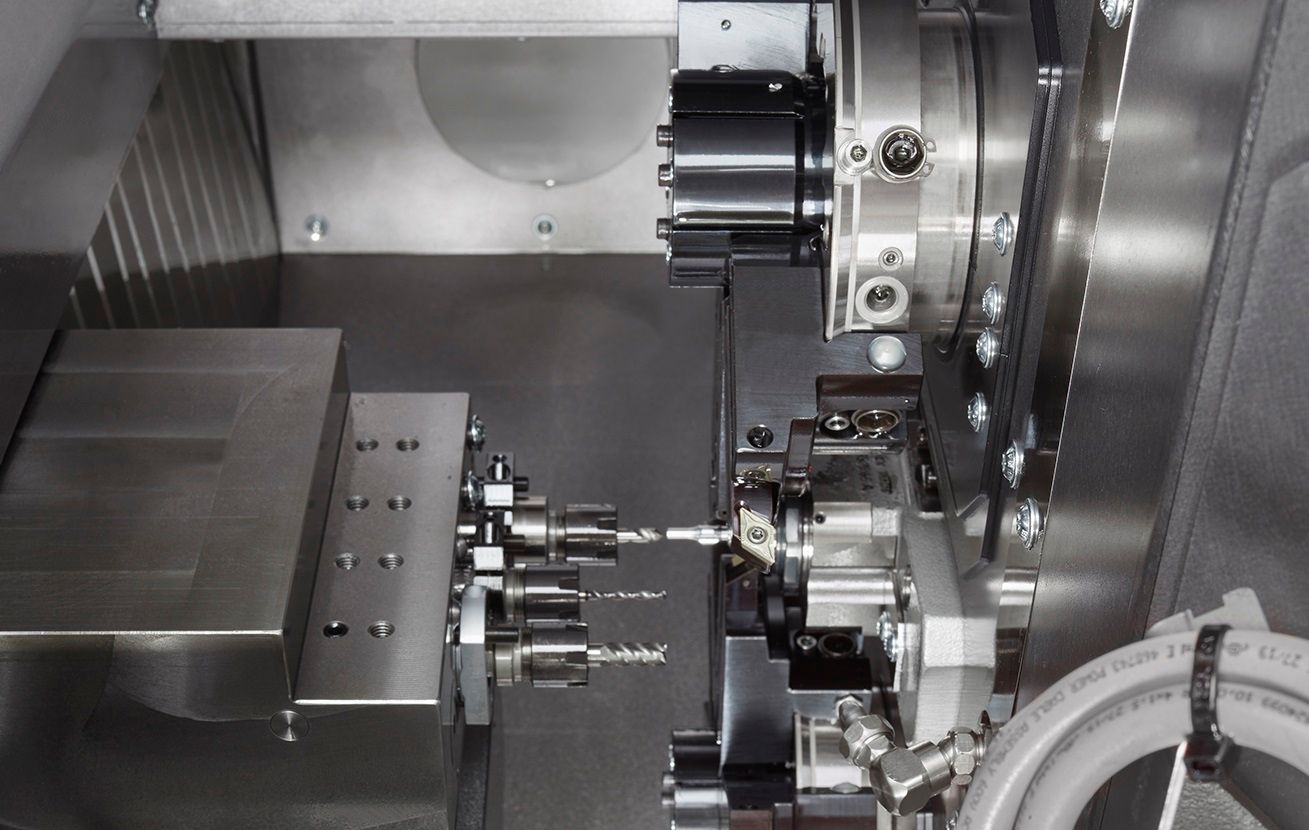Index Announces Next Generation TNL12 Sliding-Headstock CNC Lathe
Index has announced the launch of the next generation of its Traub TNL12 sliding-headstock lathe for small part machining. Representing a comprehensive evolution of the machine, the new TNL12 incorporates a plethora of design changes that boost speed, flexibility and accuracy.
The new machine provides an especially strong value proposition for medical manufacturers responsible for producing implants, bone screws and instruments for minimally invasive surgery.
Like its predecessor, the new TNL12 features four tool carriers that can be applied to a workpiece simultaneously, albeit with significant changes to the machine’s kinematics. While the front-working attachment and counter spindle were previously arranged on a single slide, they are now housed on separate slides. This eliminates potential interdependence between front-end and counter spindle machining, allowing for much greater flexibility in programming. Additionally, this design reduces the mass of both elements, allowing for faster and more dynamic machine response.
The features enabling rear-end machining also have undergone substantial changes. While the former model of the machine offered X-axis machining on the counter spindle, the new TNL12 provides full 3-axis machining in this position. A new back-working attachment offer six tool stations, with up to four allowing live tooling, as well as a flushing unit.
Overall tooling capacity has also been increased, with the capability to house up to 40 tools with the use of double and triple holders. This allows operators a greater degree of freedom to optimize machining of highly complex parts. Each of two 6-station tool turrets has its own servomotor and interpolated Y-axis, with chip-to-chip tool change times reduced to just 0.3 seconds.
While the previous generation TNL12 used belt drives on the main and counter spindles, the new machine incorporates fluid-cooled motor spindles with a maximum speed of 12,000 rpm. The new TNL12 also offers higher dynamic response thanks to low-mass clamping cylinders and a carbon sleeve for the guide bushing drive. The guide bushing is freely selectable, live or programmable, with the ability to adjust itself via a pneumatic servo valve.





